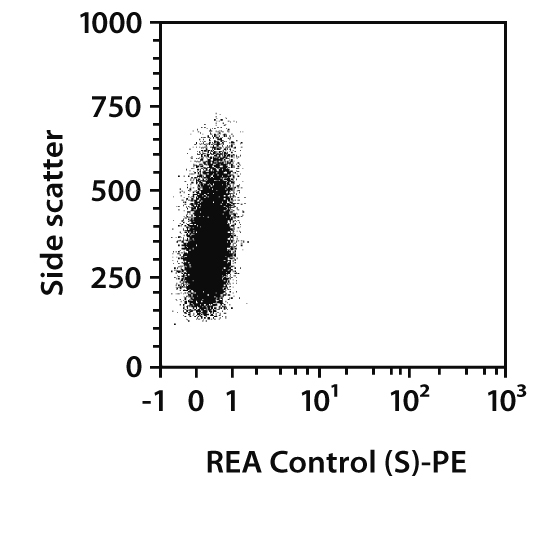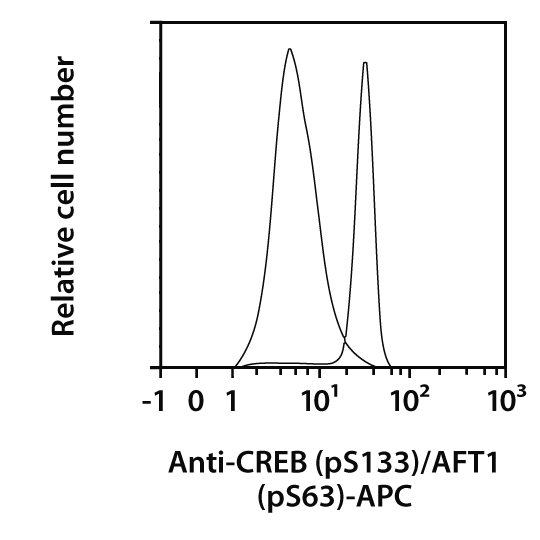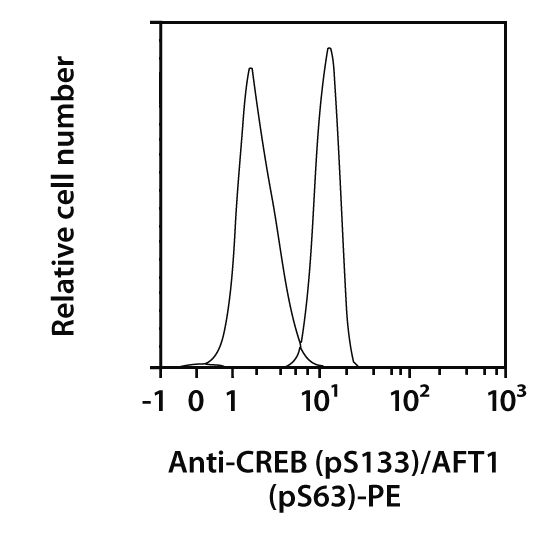Antibodies
Code: 130-104-402
Overview
Clone REA296 recognizes MHC class II-associated invariant chain (Ii)-derived peptide (CLIP) complexes. MHC class II αβ heterodimers associate early during biosynthesis with a type II membrane protein, the invariant chain (Ii). The invariant chain serves as a chaperone for MHC II molecules and mediates trafficking to the endosomal pathway. In the endosomal pathway Ii is sequentially degraded, leaving a residual CLIP in the peptide-binding groove of MHC II. In presence of antigen peptide fragments, HLA-DM then binds to the MHC II molecule, releasing CLIP and allowing peptides to bind. REA296 detects HLA class II-positive cells which have impaired HLA-DM activity, and tumor cells that have escaped immuno-surveillance by CD4-positive T cells.
Additional information: Clone REA296 displays negligible binding to Fc receptors.
Alternative names
Class II-associated invariant chain peptide, DHLAG, HLADG, II, Ia-GAMMA, CD74Specifications
- Human : 0
- PE : 0
- 100 tests : 0
- 1 mL : 0
- Recombinant Human IgG1 : 0
Code: 130-101-391
Overview
Clone REA131 recognizes the serine 133 (S133)–phosphorylated form of the human cAMP responsive element (CRE)–binding transcription factor CREB, a member of a family of cAMP responsive element (CRE)–binding transcription factors that include CREB, CRE modulator (CREM), and activating transcription factor 1 (ATF1). REA131 cross-reacts with the S63-phosphorylated form of human ATF-1. Several different serine-threonine kinases have been shown to promote phosphorylation of CREB at its transcription activating site, S133, including a cAMP-dependent protein kinase A (PKA), protein kinase C (PKC; including PKCε), calmodulin kinases (CaMKs; e.g., CaMK-IV), and pp90 ribosomal S6 kinase (pp90 RSK; also known as RSK2). Once serine 133 of CREB is phosphorylated, CREB interacts with its co-activator protein, CREB-binding protein (CBP), or p300 to initiate transcription of CREB-responsive genes. CREB has been shown to be involved in a variety of cellular processes, including cell proliferation, survival, differentiation, adaptive responses, glucose homeostasis, spermatogenesis, circadian rhythms, and synaptic plasticity associated with memory. CREB plays many different roles in immune function, e.g., through the inhibition of NF-κB activity, the induction of IL-10 and the promotion of FoxP3 expression. CREB promotes activation and proliferation of T and B cells and differentially regulates Tʜ1, Tʜ2, and Tʜ17 responses. CREB is expressed in all somatic cells.
Additional information: Clone REA131 displays negligible binding to Fc receptors.
Alternative names
EWS-ATF1, FUS/ATF-1, TREB36, CREB1Specifications
Code: 130-101-393
Overview
Clone REA131 recognizes the serine 133 (S133)–phosphorylated form of the human cAMP responsive element (CRE)–binding transcription factor CREB, a member of a family of cAMP responsive element (CRE)–binding transcription factors that include CREB, CRE modulator (CREM), and activating transcription factor 1 (ATF1). REA131 cross-reacts with the S63-phosphorylated form of human ATF-1. Several different serine-threonine kinases have been shown to promote phosphorylation of CREB at its transcription activating site, S133, including a cAMP-dependent protein kinase A (PKA), protein kinase C (PKC; including PKCε), calmodulin kinases (CaMKs; e.g., CaMK-IV), and pp90 ribosomal S6 kinase (pp90 RSK; also known as RSK2). Once serine 133 of CREB is phosphorylated, CREB interacts with its co-activator protein, CREB-binding protein (CBP), or p300 to initiate transcription of CREB-responsive genes. CREB has been shown to be involved in a variety of cellular processes, including cell proliferation, survival, differentiation, adaptive responses, glucose homeostasis, spermatogenesis, circadian rhythms, and synaptic plasticity associated with memory. CREB plays many different roles in immune function, e.g., through the inhibition of NF-κB activity, the induction of IL-10 and the promotion of FoxP3 expression. CREB promotes activation and proliferation of T and B cells and differentially regulates Tʜ1, Tʜ2, and Tʜ17 responses. CREB is expressed in all somatic cells.
Additional information: Clone REA131 displays negligible binding to Fc receptors.
Alternative names
EWS-ATF1, FUS/ATF-1, TREB36, CREB1Specifications








